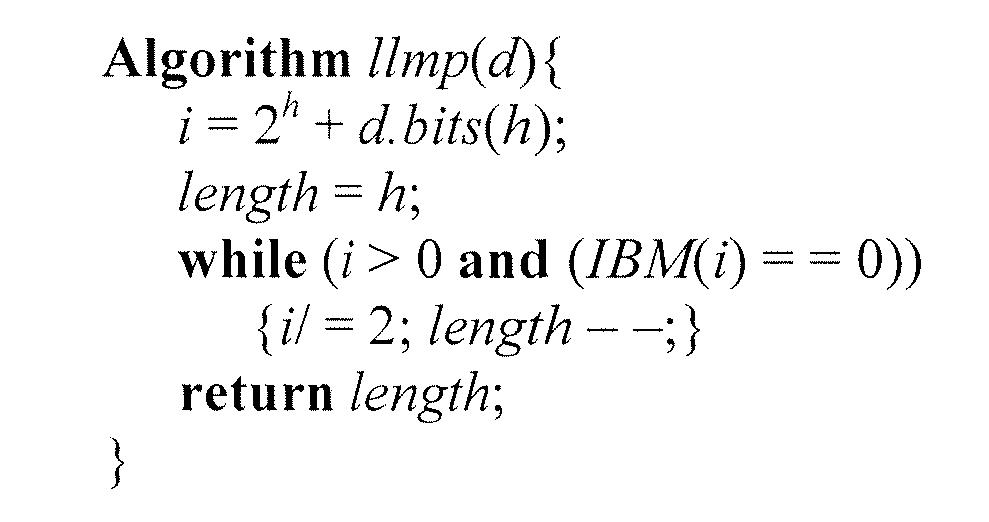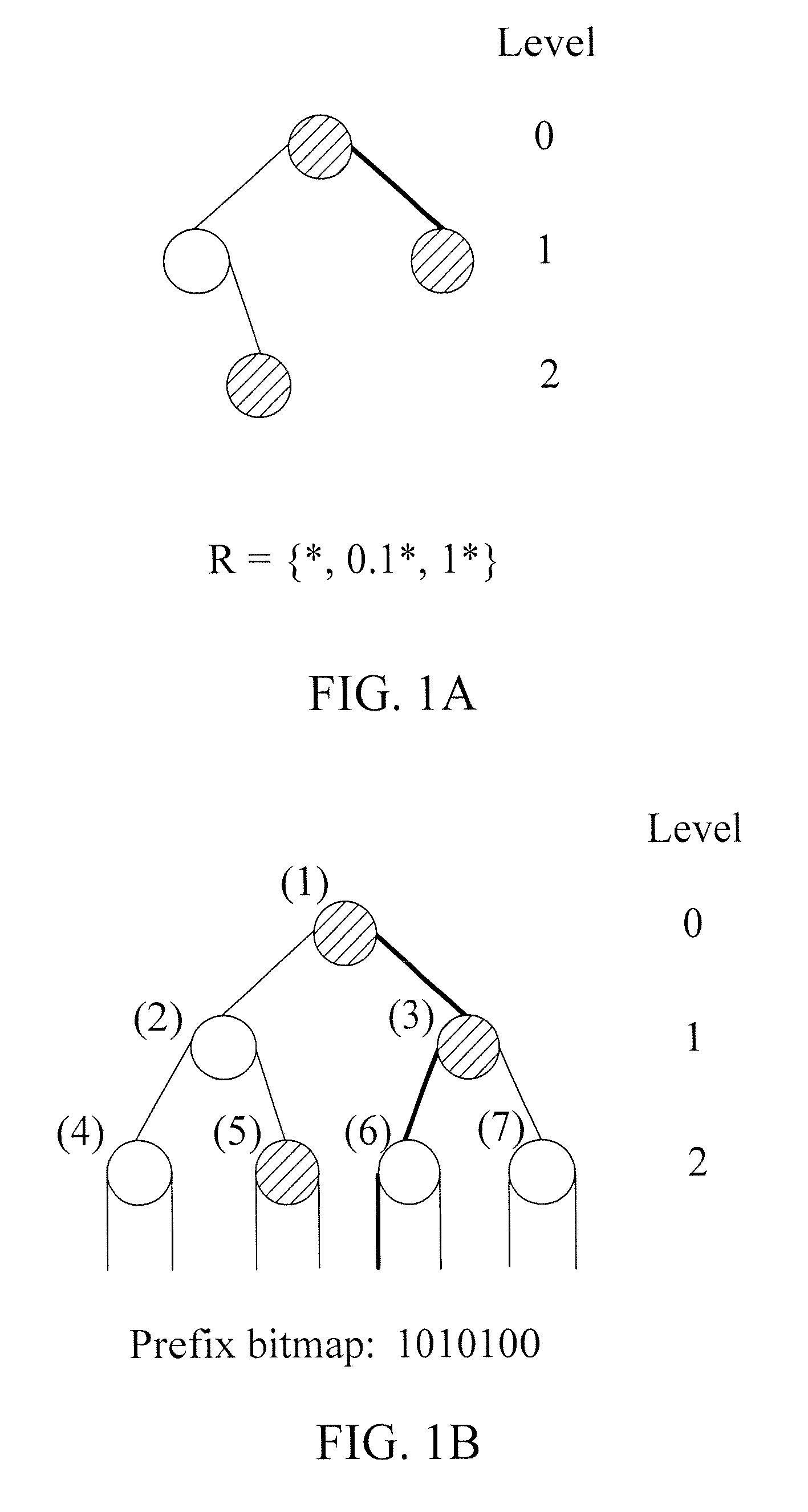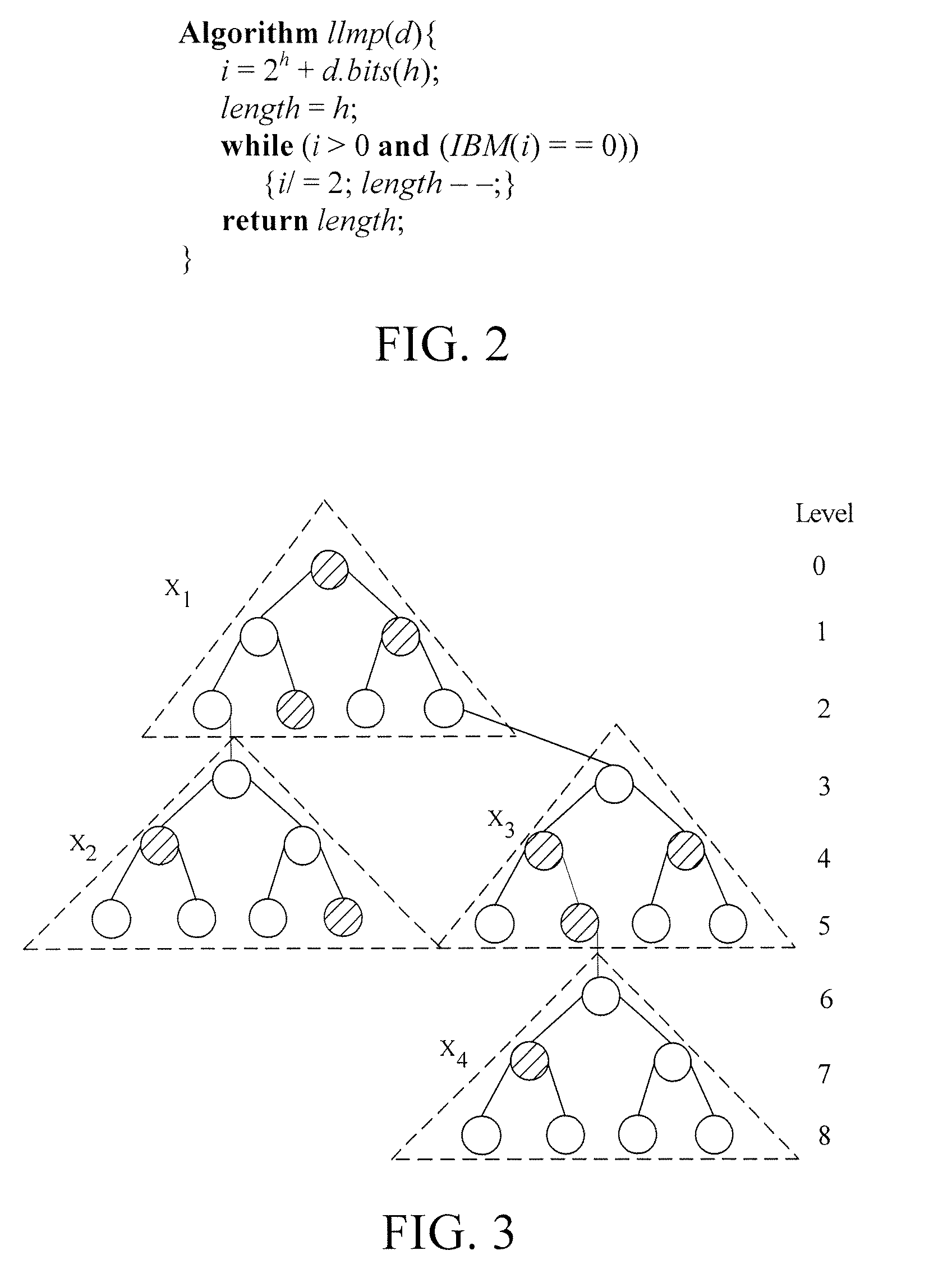Dynamic Tree Bitmap for IP Lookup and Update
- Summary
- Abstract
- Description
- Claims
- Application Information
AI Technical Summary
Benefits of technology
Problems solved by technology
Method used
Image
Examples
example 1
Free Mode Bitmap
[0055]In this mode, memory management is done using a single chain of free nodes, each node on the single chain is of the same size. A node is allocated by removing the first node on this chain and a node is deallocated by adding the deallocated node to the front of the chain. All of memory is initialized to 0 and whenever a node is deallocated, all its children fields also are 0. Consequently, the algorithms work without explicitly setting child pointers to 0 each time a node is allocated. Because of the simple memory management scheme in use, node allocation and deallocation each require a single memory access, for a total of 2 cycles.
[0056]For a word of the SRAM 72 bits in length, the largest stride that can be used yet have an IBM that fits in a word is s=6. Since the maximum length of an IPv4 prefix is 32, with a stride of 6, the DTBM has at most six levels. Several choices are possible for the strides of these six levels. Each provides a different balance betwe...
example 2
Packed Mode Bitmap
[0063]In an effort to improve the memory efficiency of the TDBM structure, the packed mode is one example in which several leaves may be packed into a single 28-word node. A 28-word node can be referred to as a type A node.
[0064]For the packed mode, one can consider a 466656 implementation. This implementation is motivated by the observation that, in practice, IPv4 rule tables have very few prefixes whose length is more than 24. Consequently, a 366666 DTBM is expected to have very few nodes at level 5. Hence, virtually all of the level 4 nodes are leaves. Further, very few leaves are expected at levels 2 and 3. In the 466656 design, type B nodes are used at level 5 and type C nodes at level 4.
[0065]In a 466656 TDBM, the root stride is 4, the stride at level 4 is 5, and the stride at every other level is 6. The root of the DTBM requires a 15-bit IBM, 16 child pointers, and 15 nextHop fields. As was the case for the 366666 design, the DTBM root is represented by stor...
example 3
Lazy Mode Bitmap
[0075]In this mode, prefix deletion is done by simply setting the appropriate bit of the IBM of the node that contains the deleted prefix to 0. The cleanup action performed by deleteCleanup is not done. Consequently, nodes are never deallocated. While it is easy to see that lazy mode operation, through its elimination of the cleanup action, supports faster deletes, lazy mode operation also speeds inserts as memory management is simplified. Besides a reduction in the worst-case time for an insert, average-case time also may be reduced as future inserts may reuse nodes that would, otherwise, have been deallocated during the cleanup phase of a delete. In order to prevent the risk of failing to make an insert, it is preferable to rebuild the data structure whenever it gets “close” to running out of memory. The rebuild time, even for large router-tables, is of the order of tens of milliseconds.
[0076]In the lazy mode of operation, a count field (FIG. 5) is not required, as...
PUM
 Login to View More
Login to View More Abstract
Description
Claims
Application Information
 Login to View More
Login to View More - R&D
- Intellectual Property
- Life Sciences
- Materials
- Tech Scout
- Unparalleled Data Quality
- Higher Quality Content
- 60% Fewer Hallucinations
Browse by: Latest US Patents, China's latest patents, Technical Efficacy Thesaurus, Application Domain, Technology Topic, Popular Technical Reports.
© 2025 PatSnap. All rights reserved.Legal|Privacy policy|Modern Slavery Act Transparency Statement|Sitemap|About US| Contact US: help@patsnap.com



